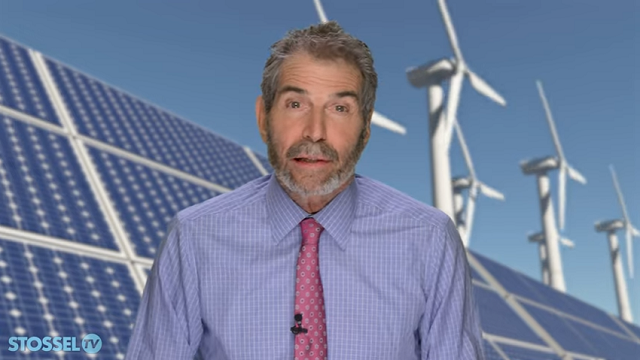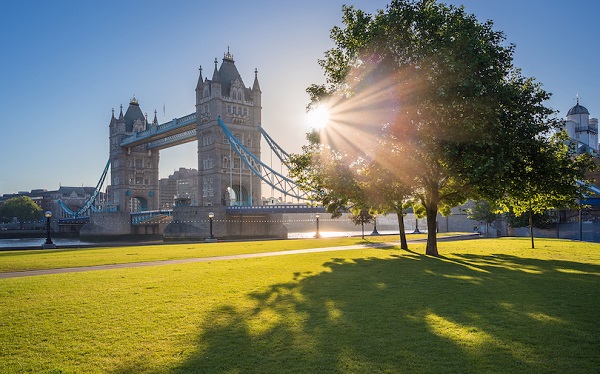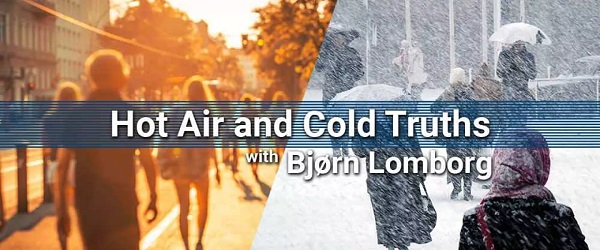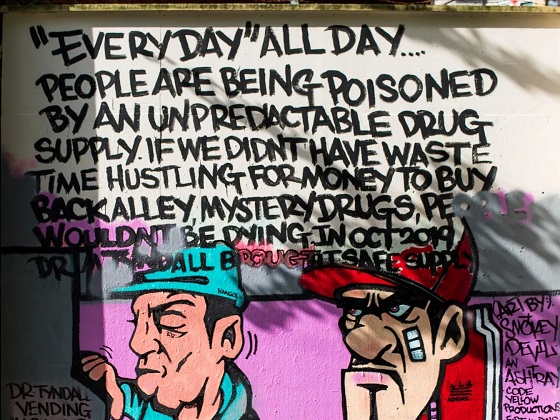Environment
Why Wind and Solar Make Our Power Grid Less Reliable

From StosselTV
Politicians and activists tell how “renewable” energy will save us from the climate “crisis.” They don’t tell us about the real costs of green power.
——
My new video covers a documentary series called, “Juice: Politics, Power and the Grid.” It reveals how although renewables sound green, they have lots of problems. California promises to get 50% of their electricity from renewable sources. Now they deal with blackouts, rationing, and prices that increased 3x faster than in the rest of the US. You can watch the full documentary at @JuiceTheSeries .
After 40+ years of reporting, I now understand the importance of limited government and personal freedom.
——————————————
Libertarian journalist John Stossel created Stossel TV to explain liberty and free markets to young people. Prior to Stossel TV he hosted a show on Fox Business and co-anchored ABC’s primetime newsmagazine show, 20/20. Stossel’s economic programs have been adapted into teaching kits by a non-profit organization, “Stossel in the Classroom.” High school teachers in American public schools now use the videos to help educate their students on economics and economic freedom. They are seen by more than 12 million students every year.
Stossel has received 19 Emmy Awards and has been honored five times for excellence in consumer reporting by the National Press Club. Other honors include the George Polk Award for Outstanding Local Reporting and the George Foster Peabody Award.
————
To get our new weekly video from Stossel TV, sign up here: https://www.johnstossel.com/#subscribe
————
Environment
Experiments to dim sunlight will soon be approved by UK government: report

From LifeSiteNews
Dimming the sunlight poses serious dangers, including by blocking vitamin D, potentially reducing rainfall, and releasing toxins into the environment.
Experiments aimed at dimming sunlight with the stated goal of reducing “global warming” will be approved by the U.K. government within weeks, according to The Telegraph.
Professor Mark Symes, the program director for Aria (Advanced Research and Invention Agency), said the organization has planned “small controlled outdoor experiments on particular approaches” to sunlight dimming.
These trials could include “injecting aerosols into the atmosphere, or brightening clouds,” which are both Sunlight Reflection Methods (SRM). Marine Cloud Brightening (MCB) involves spraying sea-salt particles into the sky to make low-lying clouds more reflective.
It is unclear what kind of aerosols are being considered for the trials, although according to geoengineering.global, sulfate aerosols as well as black carbon, metallic aluminum, aluminum oxide, and barium titanate aerosols are “being considered for this solar radiation management approach.” Metallic aerosols in particular would raise health concerns for human beings as well as animal and plant life.
Symes has insisted to the public that the experiments won’t release toxic substances but has not specified what they will involve. “We have strong requirements around the length of time experiments can run for and their reversibility and we won’t be funding the release of any toxic substances to the environment,” he said.
Geoengineering.global admits that stratospheric aerosol injection poses dangers such as the possibility of reduced rainfall in certain areas, with accompanying “loss of crops and access to freshwater.”
According to The Telegraph, researchers have said in recent years that pollution above shipping routes has caused clouds above them to become brighter than normal, bringing about an overall dimming effect by reflecting sunlight back into the atmosphere.
While the scientific establishment often claims there is a “consensus” that the earth is warming, and, moreover, at a dangerous rate, six top international scientists released findings in 2022 that projected a cooling of the Northern hemisphere until the 2050s, and, by extension, the rest of the globe.
Most compellingly, over 1,100 scientists and professionals signed a “World Climate Declaration (WCD)“ in 2022 declaring that “There is no climate emergency,” even if the globe is warming. They point out that “Earth’s climate has varied for as long as the planet has existed, with natural cold and warm periods,” and add that “warming is far slower than predicted.”
They also note that “there is no statistical evidence that global warming is intensifying hurricanes, floods, droughts and such-like natural disasters, or making them more frequent.”
The question of global warming aside, the effects of dimmed sunlight from even short-term experiments could have detrimental effects on mental and physical health. Sunlight is a critical source of vitamin D, which is needed to help defend against infections. Those who live above the 37th parallel are already said to be exposed to insufficient amounts of sunlight for vitamin D production during the fall and winter.
Dimmed sunlight could also put people at increased risk of Seasonal Affective Disorder (SAD), a type of depression linked to reduced levels of sunlight during the winter. According to researchers, the mechanism behind SAD involves lowered serotonin levels and a disrupted circadian rhythm caused by lack of sunlight.
Censorship Industrial Complex
Misinformed: Hyped heat deaths and ignored cold deaths

From the Fraser Institute
Whenever there’s a heatwave—whether at home or abroad—the media loves to splash it. Politicians and campaigners then jump in to warn that climate change is at fault, and urge us to cut carbon emissions. But they are only telling us one-tenth of the story and giving terrible advice.
Global warming indeed causes more heat waves, and these raise the risk that more people die because of heat. That much is true. But higher temperatures also cause a reduction in cold temperatures, reducing the risk that people die from the cold. Almost everywhere in the world—not just Canada—cold kills 5-15 times more people than heat.
Heat gets a lot of attention both because of its obvious link to climate change and because it is immediately visible—meaning it is photogenic for the media. Heat kills within a few days of temperatures getting too high, because it alters the fluid and electrolytic balance in weaker, often older people.
Cold, on the other hand, slowly kills over months. At low temperatures, the body constricts outer blood vessels to conserve heat, driving up blood pressure. High blood pressure is the world’s leading killer, causing 19 per cent of all deaths.
Depending on where we live, taking into account infrastructure like heating and cooling, along with vehicles and clothes to keep us comfortable, there is a temperature at which deaths will be at a minimum. If it gets warmer or colder, more people will die.
A recent Lancet study shows that if we count all the additional deaths from too-hot temperatures globally, heat kills nearly half a million people each year. But too-cold temperatures are more than nine-times deadlier, killing over 4.5 million people.
In Canada, unsurprisingly, cold is even deadlier, killing more than 12 times more than heat. Each year, about 1,400 Canadians die from heat, but more than 17,000 die because of the cold.
Every time there is a heatwave, climate activists will tell you that global warming is an existential problem and we need to switch to renewables. And yes, the terrible heat dome in BC in June 2021 tragically killed 450-600 people and was likely made worse by global warming. But in that same year, the cold in BC killed 2,500 people, yet these deaths made few headlines.
Moreover, the advice from climate activists—that we should hasten the switch away from fossil fuels—is deeply problematic. Switching to renewables drives up energy prices. How do people better survive heat? With air conditioning. Over the last century, despite the temperature increasing, the US saw a remarkable drop in heat deaths because of more air conditioning. Making electricity for air conditioning more expensive means especially poorer people cannot afford to stay cool, and more people die.
Likewise, access to more heating has made our homes less deadly in winter, driving down cold mortality over the 20th century. One study shows that cheap gas heating in the late 2000s saved 12,500 Americans from dying of cold each year. Making heating more expensive will consign at least 12,500 people to die each year because they can no longer afford to keep warm.
One thing climate campaigners never admit is that current temperature rises actually make fewer people die overall from heat and cold. While rising temperatures drive more heat deaths, they also reduce the number of cold deaths — and because cold deaths are much more prevalent, this reduces total deaths significantly.
The only global estimate shows that in the last two decades, rising temperatures have increased heat deaths by 0.21 percentage points but reduced cold deaths by 0.51 percentage points. Rising temperatures have reduced net global death by 0.3 per cent, meaning some 166,000 deaths have been avoided. The researchers haven’t done the numbers for Canada alone, but combined with the US, increased temperatures have caused an extra 5,000 heat deaths annually, but reduced the number of cold deaths by 14,000.

If temperatures keep rising, cold deaths can only be reduced so much. Eventually, of course, total deaths will increase again. But a new near-global Nature study shows that, looking only at the impact of climate change, the number of total dead from heat and cold will stay lower than today almost up to a 3oC temperature increase, which is more than currently expected by the end of the century.
People claim that we will soon be in a world that is literally too hot and humid to live in, using something called the “wet bulb” temperature. But under realistic assumptions, the actual number of people who by century’s end will live in unlivable circumstances is still zero.
The incessant focus on tens or hundreds of people dying in for instance Indian heatwaves makes us forget that even in India, cold is a much bigger challenge. While heat kills 89,000 people each year, cold kills seven times more at 632,000 every year. Yet, you would never know with the current climate information we get.
Hearing only the alarmist side of heat and cold deaths not only scares people—especially younger generations—but points us toward ineffective policies that drive up energy costs and let more people die from lack of adequate protection against both heat and cold.
Bjørn Lomborg
-

 Business2 days ago
Business2 days agoIs Government Inflation Reporting Accurate?
-

 2025 Federal Election2 days ago
2025 Federal Election2 days agoWhen it comes to pipelines, Carney’s words flow both ways
-

 2025 Federal Election2 days ago
2025 Federal Election2 days agoStudy links B.C.’s drug policies to more overdoses, but researchers urge caution
-

 2025 Federal Election2 days ago
2025 Federal Election2 days agoPolls say Canadians will give Trump what he wants, a Carney victory.
-

 2025 Federal Election2 days ago
2025 Federal Election2 days agoPoilievre’s Conservatives promise to repeal policy allowing male criminals in female jails
-

 2025 Federal Election2 days ago
2025 Federal Election2 days agoCarney Liberals pledge to follow ‘gender-based goals analysis’ in all government policy
-

 2025 Federal Election2 days ago
2025 Federal Election2 days agoTrump Has Driven Canadians Crazy. This Is How Crazy.
-

 Entertainment1 day ago
Entertainment1 day agoPedro Pascal launches attack on J.K. Rowling over biological sex views






